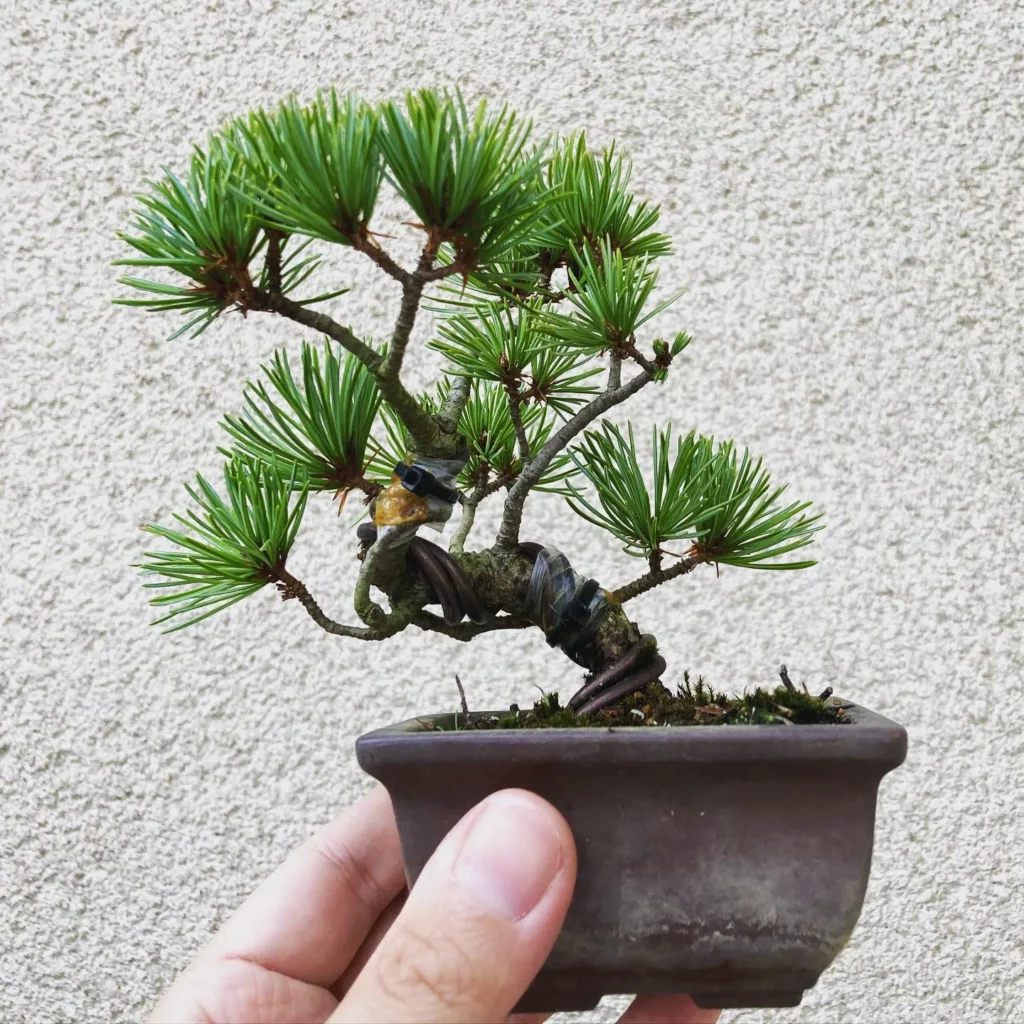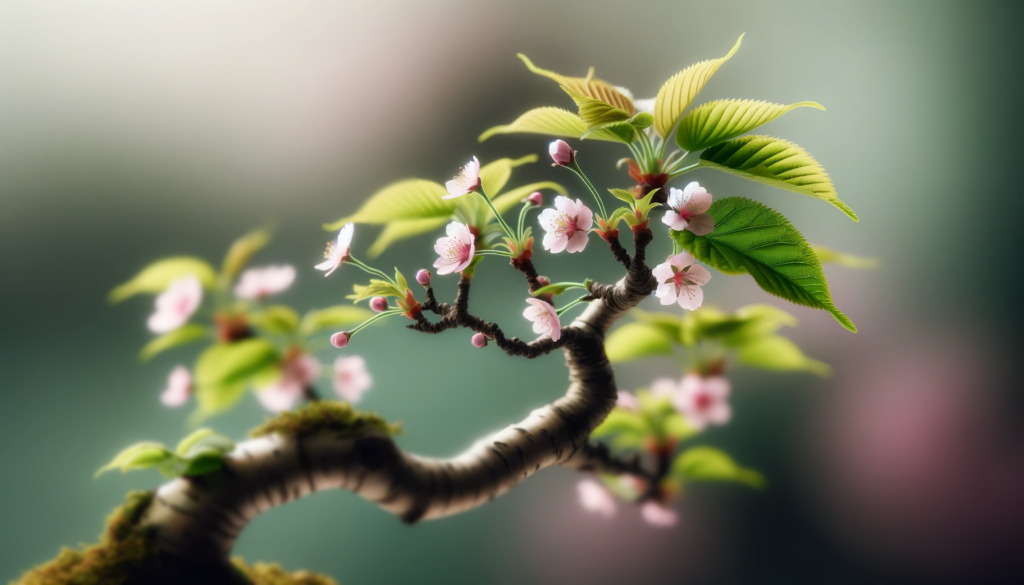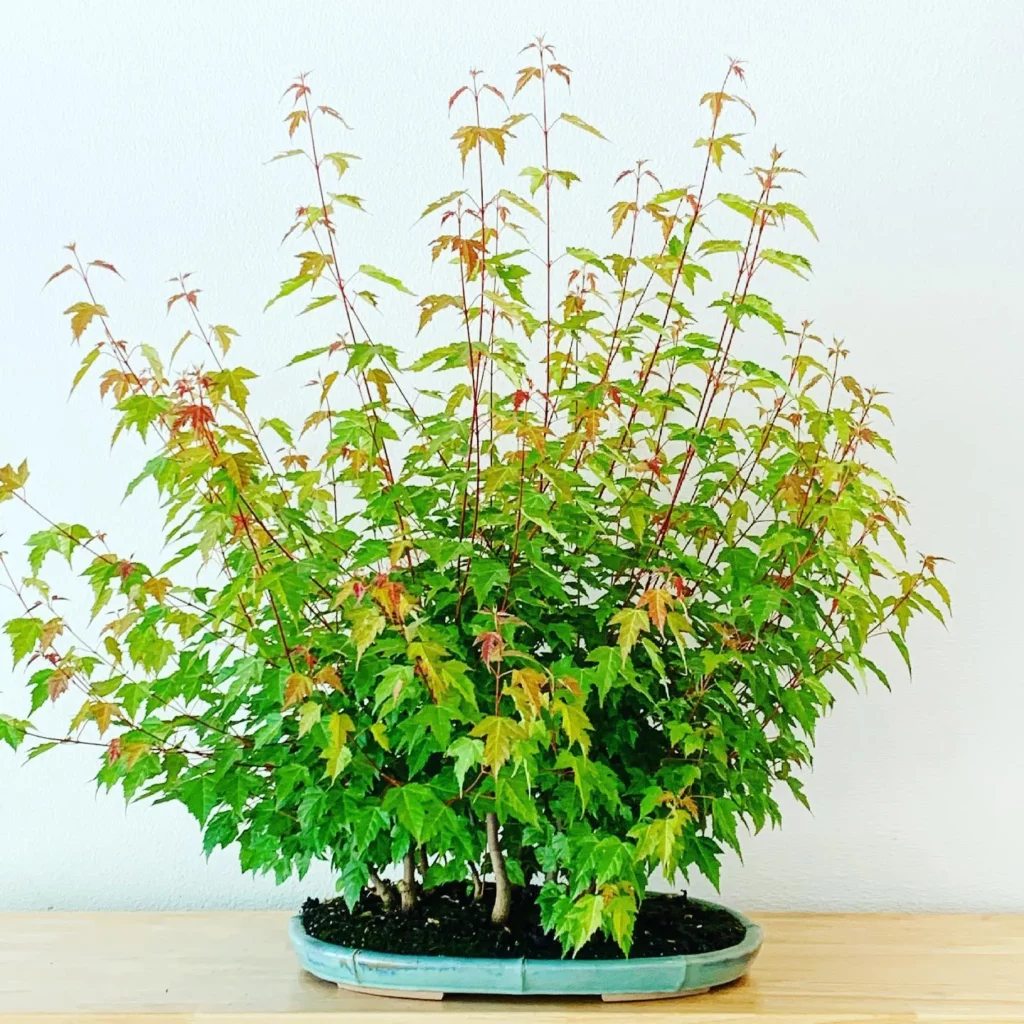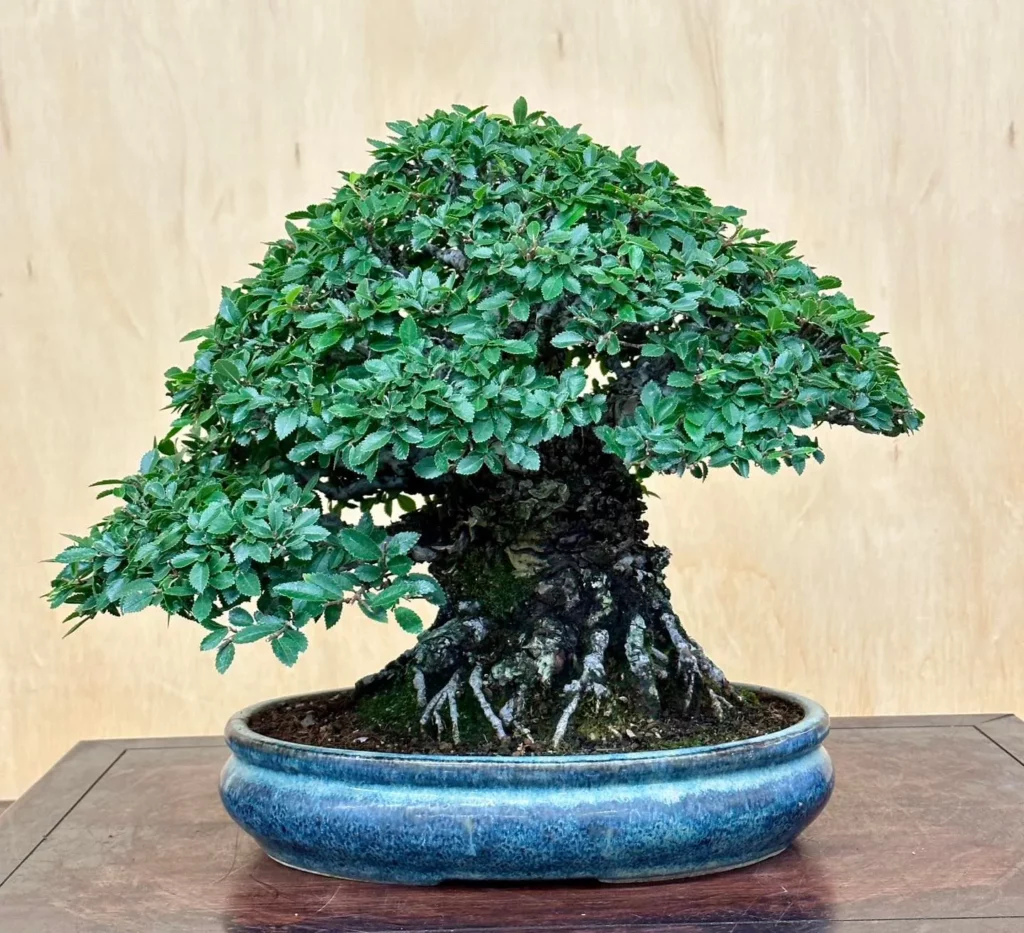Welcome to the world of Japanese Flowering Apricot Bonsai care! If you’re passionate about bonsai and interested in cultivating a unique specimen, the Japanese Flowering Apricot Bonsai, also known as Prunus mume, is a fascinating species to explore. In this article, we will delve into the art of pruning and the essential care guidelines for maintaining the health and beauty of your Japanese Flowering Apricot Bonsai.
Appearance of Japanese Flowering Apricot Bonsai



The Japanese flowering apricot bonsai is renowned for its unique and captivating appearance. This bonsai species showcases delicate flowers in various hues, including white, pink, and red, depending on the specific cultivar. The blooms add a touch of elegance and beauty to the bonsai display, creating a stunning visual spectacle.
In addition to its enchanting flowers, the trunk of the Japanese flowering apricot bonsai develops fascinating characteristics over time. It may develop deadwood or hollowed trunks, giving the bonsai a rugged and aged appearance. Furthermore, the bark on the trunks of this bonsai species can become thick and crackly as it matures, further enhancing its distinctive aesthetics.
The combination of the delicate flowers, unique trunk features, and rugged bark makes the Japanese flowering apricot bonsai a captivating choice for bonsai enthusiasts. Its remarkable appearance is sure to be a centerpiece in any bonsai collection, adding a touch of natural beauty and artistry to your surroundings.
Light Requirements for Japanese Flowering Apricot Bonsai



Proper lighting is crucial for the healthy growth and development of Japanese flowering apricot bonsai trees. These bonsai thrive in full sun, but providing a slight shade during hot summer months can be beneficial for their overall well-being. It is recommended to ensure that the bonsai receives at least 6 hours of indirect sunlight each day to promote optimal growth, flowering, and overall vitality.
Here are some key considerations regarding the light requirements of Japanese flowering apricot bonsai:
- Optimal Sunlight: Japanese flowering apricot bonsai trees prefer to be exposed to full sun. This means that they should ideally be placed in a location where they can receive direct sunlight for a significant part of the day.
- Partial Shade: While full sun is preferred, providing partial shade during extremely hot summer days can prevent the bonsai from experiencing sunburn or excessive evaporation.
- Indirect Sunlight: If full sun exposure is not possible due to environmental factors such as intense heat or direct afternoon sunlight, it is advisable to place the bonsai in an area that receives indirect sunlight. This can be achieved by providing some sort of filtered shade, such as a sheer curtain or translucent shade cloth.
- Timing: Japanese flowering apricot bonsai trees should be exposed to indirect sunlight for at least 6 hours each day to ensure they thrive. This can be achieved by strategically placing the bonsai in an area that receives the right amount of light during the day.
Watering Japanese Flowering Apricot Bonsai



Proper watering is essential for the health and vitality of your Japanese flowering apricot bonsai. During the growing season, it’s important to ensure that your bonsai tree does not suffer from water shortage. Inadequate watering can result in fewer buds or even bud drop, affecting the overall beauty of your bonsai.
When watering your Japanese flowering apricot bonsai during the growing season, make sure to water it thoroughly until water drains out of the drainage holes. This will help ensure that the entire root system receives adequate moisture. You can check if your bonsai needs watering by gently inserting your finger into the soil. If it feels dry about an inch below the surface, it’s time to water.
However, during autumn and winter, the watering requirements for your bonsai will change. As the temperature drops and the tree enters its dormant phase, you should reduce the frequency of watering. Overwatering during this period can lead to root rot and other water-related issues. It’s important to strike a balance between providing enough moisture to sustain the bonsai and avoiding excessive watering.
Fertilizing Japanese Flowering Apricot Bonsai



To ensure healthy growth and vibrant flowering, it is essential to fertilize your Japanese flowering apricot bonsai regularly. Fertilizing provides the necessary nutrients for the tree’s development and helps it thrive throughout the year.
When to Fertilize
- Apply nitrogen-rich fertilizer to your Japanese flowering apricot bonsai after it has finished flowering, typically from March to August.
Recommended Organic Bonsai Fertilizers
When choosing a fertilizer for your bonsai, it’s best to opt for organic options that promote natural and balanced growth. Two recommended fertilizers for the Japanese flowering apricot bonsai are:
- Biogold: Biogold is an organic fertilizer that provides a balanced mix of macro and micronutrients. Its slow-release formula ensures continuous nourishment for your bonsai tree.
- Hanagokoro: Hanagokoro is a Japanese organic bonsai fertilizer specifically designed for flowering bonsai trees. It contains essential nutrients that support the development of healthy blossoms and foliage.
No products found.
Potting Japanese Flowering Apricot Bonsai



Repotting is an essential aspect of caring for Japanese flowering apricot bonsai trees. It should be done every 2-3 years to promote healthy growth and prevent root congestion. When repotting, it is crucial to choose a well-drained bonsai soil to ensure proper drainage and prevent waterlogging and root rot.
Akadama bonsai soil is a popular choice for potting Japanese flowering apricot bonsai. It is a type of clay soil that retains moisture while allowing excess water to drain away. The porous nature of akadama helps prevent waterlogging, helping maintain optimal soil moisture levels for the bonsai.
To repot your Japanese flowering apricot bonsai, follow these steps:
- Carefully remove the bonsai from its current pot.
- Gently comb out the roots using a bonsai root rake or similar tool. This will help stimulate new root growth and ensure proper nutrient absorption.
- Trim any excessively long or damaged roots.
- Prepare a mixture of akadama, pumice, and lava rock in a ratio suitable for your bonsai species.
- Place a layer of the bonsai soil mixture at the bottom of the new pot.
- Position the bonsai in the pot, making sure it sits at the desired angle and location.
- Fill the remaining space in the pot with the bonsai soil mixture, ensuring it reaches all the gaps between the roots.
- Gently tap the pot to settle the soil and eliminate air pockets.
- Water the bonsai thoroughly to help the soil settle and ensure proper hydration.
It is best to repot Japanese flowering apricot bonsai at the beginning of March, just before the start of new growth. This timing allows the tree to recover quickly and establish itself in the new pot before the growing season begins.
Propagation of Japanese Flowering Apricot Bonsai
If you are interested in propagating your own Japanese Flowering Apricot Bonsai, there are two primary methods you can use: tree seeds and cuttings. However, it’s important to note that both methods can be challenging and time-consuming, so it’s recommended to buy young plants from specialized companies for a higher success rate and faster growth.
1. Tree Seeds:
- Collect mature seeds from the Japanese Flowering Apricot tree in autumn.
- Stratify the seeds by placing them in a sealed bag with slightly moistened peat moss or vermiculite. Store the bag in the refrigerator for 90-120 days to simulate the natural cold stratification process.
- After stratification, fill small pots or seed trays with well-draining bonsai soil mix.
- Sow the stratified seeds on the soil surface and cover them lightly with a thin layer of soil mix.
- Water the seeds gently and place the pots or trays in a warm and well-lit area.
- Keep the soil consistently moist but avoid overwatering to prevent rot.
- Germination may take several weeks to a few months.
2. Cuttings:
- Select healthy and disease-free branches for cuttings during the active growth period in spring or early summer.
- Cut a 6-8 inch long branch, making sure to include at least 2-3 leaf nodes.
- Remove the lower leaves, leaving only a few at the top.
- Dip the cut end in rooting hormone powder to stimulate root development.
- Insert the cutting into a small pot filled with moist bonsai soil mix.
- Place the pot in a warm and well-lit area, out of direct sunlight.
- Keep the soil consistently moist and mist the cutting regularly to maintain high humidity.
- Root development may take several weeks to a few months.
Growth and Development of Japanese Flowering Apricot Bonsai
Japanese flowering apricot bonsai trees exhibit a distinct growth pattern that is influenced by the changing seasons. Understanding this growth and development process is essential for successfully cultivating and maintaining these beautiful bonsai trees.
Spring:
In spring, as the weather begins to warm up, the leaf buds on the Japanese flowering apricot bonsai tree start to push and produce new leaves. The terminal leaf bud elongates, allowing the branch to extend further. This period of active growth is crucial for the tree’s development.
Fall:
During the fall, the leaves of the Japanese flowering apricot bonsai tree play a critical role. They help in the production of both flower buds and new leaf buds on each node of the branch. This preparation sets the stage for the tree to bloom and flourish in the coming winter.
Winter:
As winter approaches, the flower buds on the Japanese flowering apricot bonsai tree begin to grow and eventually bloom. The beauty of these delicate blossoms is a stunning sight during the winter months. However, while the flowers take center stage, the leaf buds remain dormant, patiently waiting for the arrival of spring.
Pests and Diseases of Japanese Flowering Apricot Bonsai
When caring for your Japanese flowering apricot bonsai, it’s important to be aware of potential pests and diseases that can affect its health and beauty. By recognizing and addressing these issues promptly, you can ensure the longevity and vitality of your bonsai tree.
Pests
- Aphid Attacks: Japanese flowering apricot bonsai trees can be vulnerable to aphids, especially when fertilized with nitrogen-rich solutions. If you notice aphids on your tree, you can control them by using insecticides or a dilute soap solution.
Diseases
- Rust Fungi Infestation: Without regular and proper pruning, Japanese flowering apricot bonsai trees can become susceptible to rust fungi infestations. To prevent this, it is recommended to apply a preventive spraying in May and June. This will help safeguard the leaves from leaf infestations caused by rust fungi.
When dealing with pests and diseases, it’s essential to exercise caution when using pesticides containing parathion or related substances, as they can lead to leaf fall. It’s advisable to follow the instructions provided and consult with experienced bonsai enthusiasts or professionals if needed.
Pruning and Styling Japanese Flowering Apricot Bonsai
Proper pruning is essential for the health and aesthetics of your Japanese flowering apricot bonsai tree. By implementing the right pruning techniques, you can encourage branching, maintain the desired shape, and promote healthy growth.
Start by pruning your Japanese flowering apricot bonsai tree after it has finished flowering in the spring. This is the ideal time as it allows you to remove any dead or diseased branches, as well as shape the tree’s overall structure. Use clean and sharp bonsai pruning shears to make precise cuts and ensure the health of the tree.
It is also recommended to perform another round of pruning in early summer. This will help further refine the shape of your bonsai and stimulate new growth. When pruning, remember to leave 2-3 leaf buds on each shoot to promote healthy regrowth, and ensure that you are not over-pruning, which can weaken the tree.
In addition to pruning, styling your Japanese flowering apricot bonsai tree can enhance its overall visual appeal. Wiring can be used to shape the branches and create the desired aesthetic. However, exercise caution when using wire and avoid excessive tension that may result in branch breakage.
Bonsai Pots for Japanese Flowering Apricot Bonsai
When it comes to selecting the perfect bonsai pot for your Japanese flowering apricot bonsai tree, there are a few key considerations to keep in mind. The choice of pot can greatly enhance the overall aesthetic appeal of your bonsai, so it’s important to make the right decision.
Glazed bonsai pots are highly recommended, especially for Japanese flowering apricot bonsai trees that bloom in early spring. The vibrant colors and glossy finish of glazed pots beautifully complement the delicate flowers of the apricot bonsai.
For durability and longevity, opt for frost-proof bonsai pots that can withstand the harsh winter conditions without cracking or deteriorating. Handmade pots add a touch of authenticity and craftsmanship to your bonsai display.
When it comes to choosing the glaze for your bonsai pot, opt for dull and matte finishes over shiny ones. The subdued glaze allows the attention to be focused on the beauty of the bonsai tree itself, rather than the pot.
There are various shapes of bonsai pots that can be suitable for Japanese flowering apricot bonsai trees, including oval, rectangular, and round pots. However, it is advised to avoid using flat pots as they can hinder proper drainage and root growth.
For young plants in the growing phase, plastic bonsai pots can be a practical and cost-effective choice. They provide the necessary protection and flexibility for the growing roots while allowing for easy monitoring of the moisture levels.
- Choose glazed bonsai pots to enhance the beauty of your Japanese flowering apricot bonsai.
- Opt for frost-proof and handmade pots for durability and authenticity.
- Prefer dull and matte glazes over shiny ones to highlight the bonsai tree.
- Consider using oval, rectangular, or round pots, but avoid flat pots.
- Plastic bonsai pots are suitable for young plants during the growing phase.
Flowering and Fruits of Japanese Flowering Apricot Bonsai
The Japanese flowering apricot bonsai is renowned for its stunning display of flowers during the winter months. The flowers can range in color, from delicate whites to vibrant pinks and enchanting reds. To determine the color of the flowers, you can examine the inside of the branch. If it is red, prepare to be greeted with a cascade of red blooms. If it is green, the flowers may surprise you with a variety of colors.
However, the beauty of the Japanese flowering apricot bonsai doesn’t stop at its blossoms. These bonsai trees have the potential to bear fruit, adding another layer of charm to your bonsai collection. Imagine the joy of nurturing a bonsai tree that not only delights your eyes with its flowers but also rewards you with delicious fruits.
When it comes to flowering and fruiting, the Japanese flowering apricot bonsai requires proper care and maintenance. Maintaining the ideal lighting conditions, fertilizing regularly, and providing appropriate watering are essential factors that contribute to the tree’s flowering and fruiting success. With dedication and patience, you can witness the full beauty of this unique bonsai species through its flowering and the possibility of experiencing the joy of harvesting fruits from your very own bonsai tree.
FAQ
How often should I fertilize my Japanese flowering apricot bonsai?
It is recommended to fertilize the bonsai abundantly and nitrogen-rich after flowering from March to August.
What is the best bonsai soil for repotting a Japanese flowering apricot bonsai?
A well-drained bonsai soil such as Akadama bonsai soil is a popular choice for repotting a Japanese flowering apricot bonsai.
Can I propagate a Japanese flowering apricot bonsai from tree seeds?
Yes, propagation can be done through tree seeds, but it is recommended to buy young plants from specialized companies for better results.
When is the best time to prune a Japanese flowering apricot bonsai?
Pruning should be done after flowering in spring and again in early summer to encourage branching and maintain the desired shape.
What pots are recommended for Japanese flowering apricot bonsai trees?
Glazed bonsai pots, especially frost-proof, handmade ones, are recommended for Japanese flowering apricot bonsai trees.
How can I make my Japanese flowering apricot bonsai tree bloom?
Japanese flowering apricot bonsai trees bloom in winter. The presence of flowers can be determined by the color of the inside of the branch. If it is red, the flowers will be red, and if it is green, the flowers can be any color.





